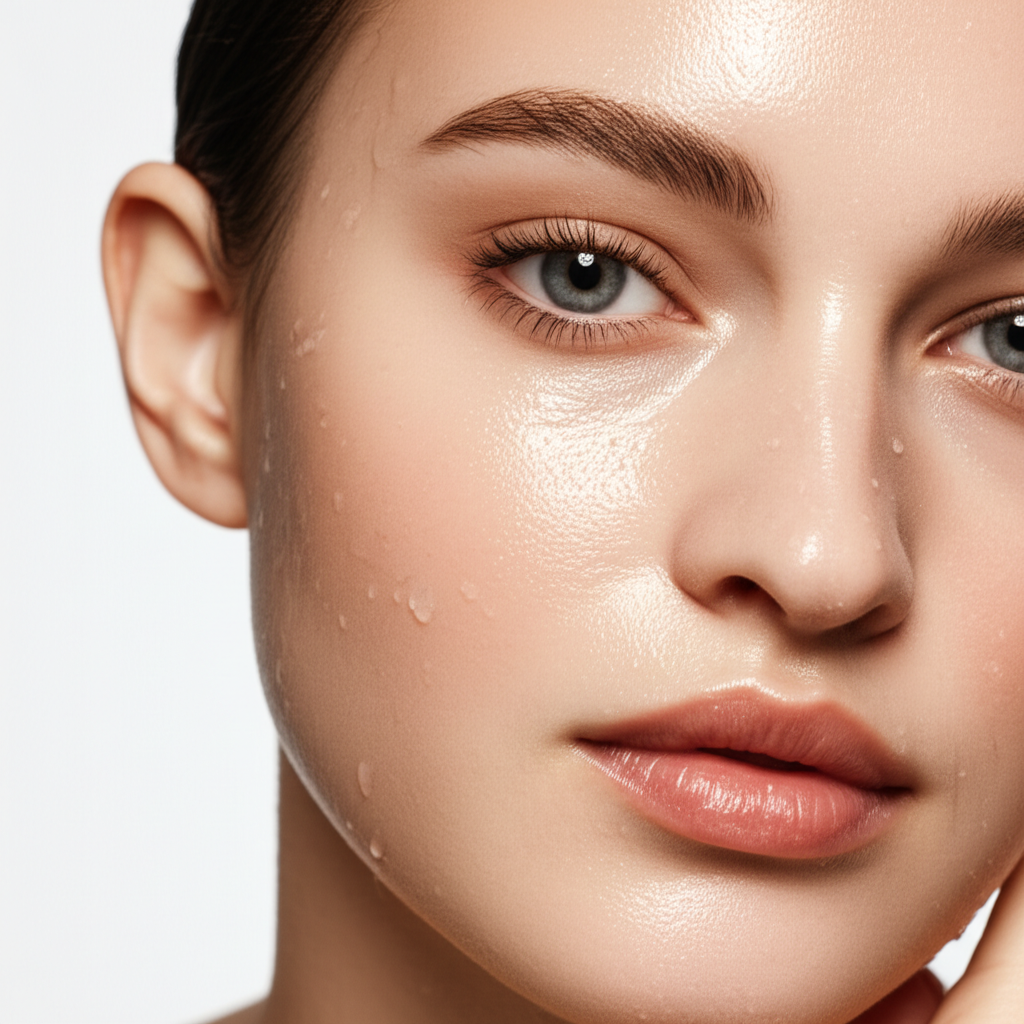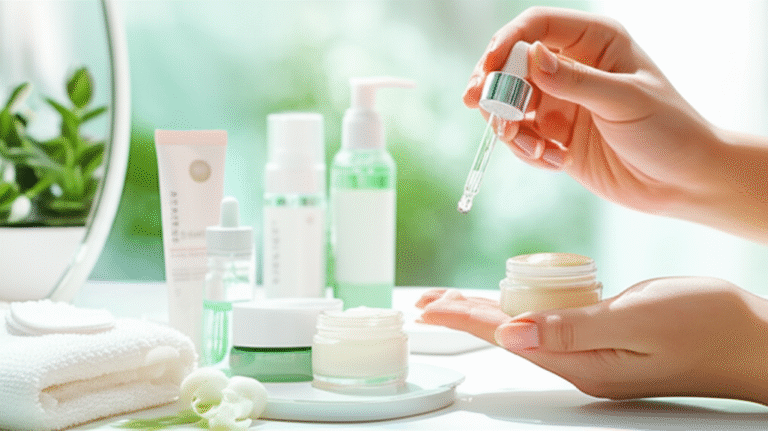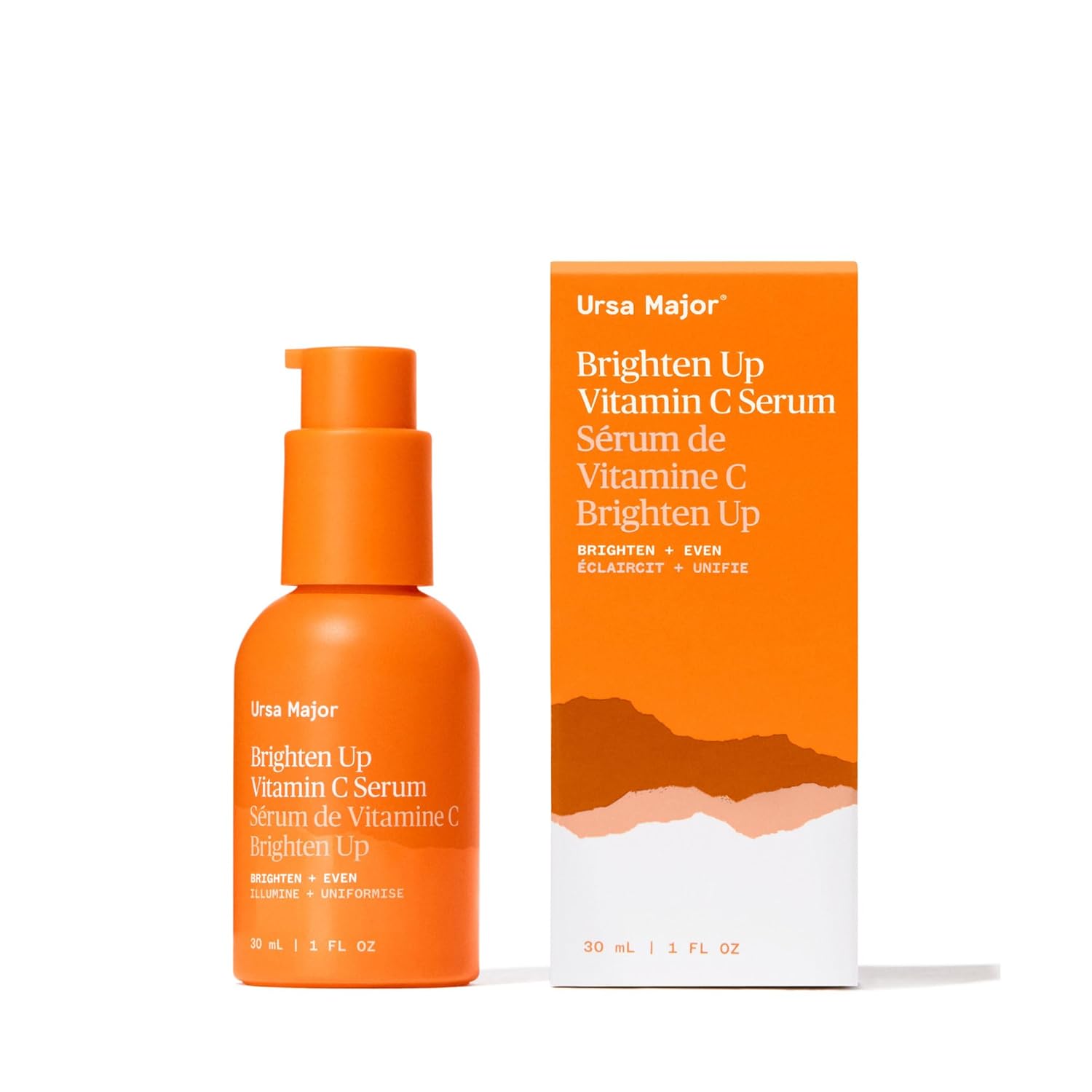Revitalize Skin Care – Get amazing and essential results by building a simple, consistent skincare routine with the right products for your skin type. Focus on cleansing, treating, and protecting your skin to achieve a healthy, revitalized glow at home.
Do you ever look in the mirror and wish your skin looked a bit brighter, smoother, or just… happier? You’re not alone! So many of us dream of that healthy, radiant skin, but navigating the world of cleansers, serums, and moisturizers can feel overwhelming. It’s easy to get lost in complex routines and expensive ingredients. But what if I told you that achieving revitalized skin is totally achievable, even with a simple approach? My goal is to break down the essentials, making skincare easy, affordable, and dare I say, fun! Together, we’ll unlock your skin’s natural glow with straightforward steps and smart choices.
Understanding Your Skin’s Needs: The Foundation of Revitalization

Before diving into products, the most crucial step in revitalizing your skin is understanding what it actually needs. Think of it like this: you wouldn’t give a thirsty plant a heavy, oily fertilizer, right? The same applies to your skin! Knowing your skin type is your secret weapon for picking the right revitalizing skin care products. It means saying goodbye to trial-and-error and hello to effective, targeted care that brings out your best skin.
Identifying Your Skin Type
There are generally five main skin types, each with its own unique characteristics. Let’s decode them:
- Normal Skin: This skin type is well-balanced, not too oily and not too dry. It’s often smooth in texture, with minimal visible pores and few imperfections. It tends to react well to most products.
- Dry Skin: Dry skin lacks oil and moisture. It might feel tight, especially after cleansing, and can often appear dull or flaky. It’s more prone to showing fine lines.
- Oily Skin: Oily skin produces an excess of sebum, the skin’s natural oil. This can lead to a shiny appearance, enlarged pores, and a higher likelihood of breakouts like acne.
- Combination Skin: This is perhaps the most common type. It means you have a mix of oily and dry or normal areas. Typically, the T-zone (forehead, nose, and chin) is oily, while the cheeks may be normal or dry.
- Sensitive Skin: Sensitive skin isn’t so much a type as a condition, though some skin types are more prone to it. It reacts easily to certain ingredients or environmental factors, leading to redness, itching, or stinging.
To figure out your skin type, wash your face with a gentle cleanser and pat it dry. Wait about 30 minutes without applying any products. Then, observe how your skin feels and looks. Does it feel tight and dry all over? Likely dry. Is it shiny and oily everywhere? Probably oily. Is only your T-zone oily, with drier cheeks? That’s combination. If it feels comfortable and balanced, you likely have normal skin. If you experience redness or irritation easily with most products, you might have sensitive skin.

L’Oreal Paris Revitalift Triple Power Anti-Aging Concentrated Face Serum
With Hyaluronic Acid and Pro-Xylane – Reduces Wrinkles – 1 oz
- Brand: L’Oreal Paris
- Size: 1 oz
- Price: $19.29 $19.29 per fluid ounce
- Shipping to Bangladesh: $26.27
- Features: Anti-Aging, Anti-Wrinkle, Hydrating, Moisturizing, Replenishing
- Scent: Aloe Vera
Once you know your type, choosing the right revitalizing skin care products becomes so much simpler. It’s the first step towards amazing and essential results.
The Core Pillars of Revitalized Skin: Cleanse, Treat, Protect
To truly revitalize your skin, we need to build a routine around three fundamental steps. Think of these as the non-negotiables for healthy, glowing skin. Focusing on these pillars ensures your skin is properly cared for, making it more receptive to any targeted treatments and helping it fend off damage.
1. Cleansing: A Fresh Start
Cleansing isn’t just about washing your face; it’s about removing the day’s grime, pollution, makeup, and excess oil without stripping your skin of its natural moisture. A clean canvas is essential for any treatment or moisturizer to work effectively.
Choosing the Right Cleanser
The cleanser you use should align with your skin type. Using the wrong one can actually create problems, making dry skin drier or oily skin produce even more oil to compensate.
Here’s a simple guide:
| Skin Type | Recommended Cleanser Type | Why It Works |
|---|---|---|
| Normal | Gentle foaming cleanser or cream cleanser | Effectively removes impurities without stripping natural oils. |
| Dry | Cream cleanser, oil cleanser, or micellar water | Hydrates and cleanses simultaneously, preventing tightness. |
| Oily | Foaming cleanser or gel cleanser with salicylic acid (for acne-prone) | Controls excess oil and helps to keep pores clear. |
| Combination | Gentle foaming cleanser or gel cleanser | Balances oiliness in the T-zone while being gentle on drier areas. |
| Sensitive | Cream cleanser or micellar water labeled “fragrance-free” and “for sensitive skin” | Minimizes the risk of irritation and redness. |
When cleansing, use lukewarm water—never hot—as hot water can strip your skin’s natural oils. Gently massage the cleanser onto your skin, then rinse thoroughly. Pat your face dry with a clean, soft towel. Avoid rubbing, which can cause irritation.
2. Treatment: Targeted Revitalization
This is where the magic happens! Treatment steps involve targeted ingredients designed to address specific concerns and boost your skin’s overall health and appearance. For revitalized skin, we often look to ingredients that promote cell turnover, hydrate deeply, and protect against damage.
Key Ingredients for Revitalization
When you’re looking for revitalizing skin care products, these ingredients are your best friends:
- Hyaluronic Acid: A powerhouse hydrator that draws moisture into the skin, plumping it up and reducing the appearance of fine lines.
- Vitamin C: A potent antioxidant that brightens skin, fades dark spots, and protects against environmental damage. Look for L-Ascorbic Acid for the most effective form. Learn more about the benefits of Vitamin C on the American Academy of Dermatology website.
- Niacinamide (Vitamin B3): This versatile ingredient helps improve skin barrier function, reduces redness, minimizes pore appearance, and can even help with acne.
- Retinoids (like Retinol): These vitamin A derivatives are fantastic for skin cell turnover, helping to smooth texture, reduce wrinkles, and improve skin tone. Start with a low concentration and use only at night, as they can increase sun sensitivity. For a beginner-friendly guide to retinoids, check out resources from reputable dermatology clinics like the American Academy of Dermatology.
- Peptides: These amino acid chains can signal the skin to produce more collagen, which helps firm and plump the skin.
- AHAs (Alpha Hydroxy Acids) like Glycolic Acid and Lactic Acid: These exfoliants help to slough off dead skin cells, revealing brighter, smoother skin underneath.
How to Incorporate Treatments
A common way to incorporate treatments is through serums. Serums are concentrated formulas that deliver active ingredients deep into the skin. Apply a serum after cleansing and before moisturizing.
Your morning routine might include:
- Gentle Cleanser
- Vitamin C Serum
- Moisturizer
- Sunscreen (the most crucial step!)
Your evening routine might include:
- Gentle Cleanser (consider double cleansing if you wear makeup or heavy sunscreen)
- Treatment Serum (e.g., Hyaluronic Acid or a mild Retinoid 2-3 times a week, building up usage)
- Moisturizer
Remember to introduce new active ingredients slowly, especially retinoids and AHAs. Start with a lower concentration and use them only a few times a week to allow your skin to adjust. Patch-testing on a small area of your inner arm or jawline is also a good idea before applying to your entire face.
3. Protection: Guarding Your Glow
Protection is perhaps the most critical step for revitalizing and maintaining healthy skin. While we focus on treating concerns, neglecting protection means any progress made can be undone by environmental stressors, particularly the sun.
The Non-Negotiable: Sunscreen
Daily sunscreen use is paramount. UV rays from the sun are a major culprit in premature aging, dark spots, and loss of skin elasticity. Protecting your skin from these rays is the most effective anti-aging strategy available.
What to look for in a sunscreen:
- Broad Spectrum: This means it protects against both UVA (aging rays) and UVB (burning rays). Both contribute to skin damage.
- SPF 30 or Higher: SPF (Sun Protection Factor) measures how well a sunscreen protects against UVB rays. SPF 30 blocks about 97% of UVB rays, while SPF 50 blocks about 98%. Higher SPFs provide slightly more protection, but consistent application is key.
- Water-Resistant: If you’ll be sweating or swimming, this is important, but remember it needs to be reapplied more often.
There are two main types of sunscreen: chemical and mineral (or physical). Mineral sunscreens, containing zinc oxide and titanium dioxide, sit on top of the skin and physically block UV rays. Chemical sunscreens absorb UV rays and convert them into heat. Both are effective when used correctly. For sensitive skin, mineral sunscreens are often a better choice as they are less likely to cause irritation.
Apply sunscreen generously to all exposed skin every single day, even on cloudy days. Reapply every two hours if you are outdoors for extended periods, or after swimming or sweating.
Moisturizing: The Hydration Hero
Moisturizing seals in hydration, supports the skin barrier, and keeps your skin looking plump and dewy. Applying moisturizer after cleansing and treatments helps lock in those beneficial ingredients.
Choosing the right moisturizer:
| Skin Type | Recommended Moisturizer Type | Key Benefits |
|---|---|---|
| Normal | Lightweight lotion or cream | Maintains balance, provides comfortable hydration. |
| Dry | Rich cream, balm, or oil-based moisturizer | Provides deep hydration, locks in moisture, helps repair barrier. |
| Oily | Gel-based moisturizer, oil-free lotion | Hydrates without adding excess oil or clogging pores. |
| Combination | Lightweight lotion or gel-cream | Balances hydration; may benefit from a richer cream on dry areas. |
| Sensitive | Fragrance-free, hypoallergenic cream or lotion; barrier repair ingredients like ceramides | Soothes, hydrates, and supports compromised skin barrier without irritation. |
Apply moisturizer to slightly damp skin to help trap more moisture. This is particularly beneficial after cleansing and when using hydrating serums.
Enhancing Your Routine: Advanced (But Still Simple) Steps
Once you have the core routine down, you can easily add a few more steps to supercharge your skin’s revitalization. These are optional but can make a significant difference in achieving that coveted glow.
Exfoliation: Unveiling Fresh Skin
Exfoliation removes dead skin cells that can make your complexion look dull and prevent treatments from penetrating effectively. It’s like clearing away the old to make way for the new, vibrant skin cells.
Types of Exfoliation
- Chemical Exfoliation: Uses acids like AHAs (glycolic, lactic) and BHAs (salicylic acid) to dissolve the bonds between dead skin cells. These are often found in toners, serums, or exfoliating pads. BHAs like salicylic acid are oil-soluble and can penetrate pores, making them great for oily or acne-prone skin.
- Physical Exfoliation: Uses gentle scrubbing particles (like fine sugar or jojoba beads) or tools (like a soft konjac sponge or a silicone cleansing brush) to manually slough off dead skin cells. Be very gentle if you choose this method; harsh scrubbing can damage the skin barrier.
How often to exfoliate: For most skin types, exfoliating 1-3 times per week is sufficient. Over-exfoliation can lead to redness, irritation, and increased sensitivity. Listen to your skin! If it feels sensitive or looks red, take a break.
For beginners, starting with a mild chemical exfoliant, perhaps a toner or serum applied a couple of times a week, is a great way to begin. Always follow with moisturizer and, the next morning, sunscreen.
Face Masks: A Weekly Boost
Face masks are a fantastic way to give your skin an extra dose of concentrated ingredients. They can address specific concerns like hydration, brightening, or calming.
- Hydrating Masks: Often contain ingredients like hyaluronic acid, glycerin, or ceramides to deeply moisturize dry or dehydrated skin.
- Brightening Masks: May contain Vitamin C, niacinamide, or exfoliating acids to improve dullness and hyperpigmentation.
- Clay Masks: Excellent for oily and acne-prone skin as they absorb excess oil and can help decongest pores.
- Soothing Masks: Ingredients like aloe vera, chamomile, or centella asiatica (cica) can calm redness and irritation, perfect for sensitive skin.
Use masks once or twice a week, typically after cleansing. Follow the product’s instructions, usually leaving it on for 10-20 minutes before rinsing or removing. Always follow up with your serum and moisturizer.
Putting It All Together: Your Revitalization Plan
Consistency is key to seeing amazing and essential results. Even the best revitalizing skin care products won’t work wonders if they aren’t used regularly. Here’s a sample beginner-friendly plan:
Daily Routine (Morning & Night)
Morning:
- Cleanse: Use your gentle cleanser and lukewarm water. Pat dry.
- Treat: Apply 1-2 pumps of Vitamin C serum to face and neck.
- Hydrate: Apply your appropriate moisturizer.
- Protect: Apply a broad-spectrum SPF 30+ sunscreen. Don’t forget your neck and ears!
Evening:
- Cleanse: Wash your face with your cleanser. If you wore stubborn makeup or sunscreen, consider a double cleanse: first with an oil cleanser or micellar water to break down makeup, then with your regular cleanser. Pat dry.
- Treat: Apply a hydrating serum (like hyaluronic acid) or, 2-3 times a week, a low-concentration retinoid serum.
- Hydrate: Apply your appropriate moisturizer to seal in the treatment.
Weekly Treatments
- Exfoliate: 1-3 times per week, either in the morning or evening, after cleansing and before your serum. Choose a mild chemical exfoliant suitable for your skin type.
- Mask: 1-2 times per week, after cleansing and before serum/moisturizer.
Remember, this is a flexible guide. Pay attention to how your skin responds. If it feels dry, you might need a richer moisturizer or to exfoliate less. If it feels oily, switch to a lighter moisturizer. The goal is to find what makes your skin feel and look its best.
Frequently Asked Questions (FAQ)
Q1: How long does it take to see results from a new skincare routine?
A1: It varies depending on the products and your skin, but generally, you should start to notice subtle improvements in hydration and clarity within 2-4 weeks. More significant changes, like reduced fine lines or fading dark spots, can take 3-6 months of consistent use. Patience and consistency are key!
Q2: Can I use Vitamin C and Hyaluronic Acid together?
A2: Absolutely! They work very well together. Hyaluronic acid boosts hydration, while Vitamin C provides antioxidant protection and brightening. You can use them in the same routine, often applying Vitamin C first, followed by hyaluronic acid. Many formulations even combine them.
Conclusion
In conclusion, revitalizing your skin doesn’t have to be complicated or expensive. By focusing on understanding your skin type and building a simple, consistent skincare routine around the three core pillars—cleansing, treating, and protecting—you can achieve a healthy, glowing complexion without the overwhelm. Remember, the key is to choose the right products for your skin, introduce them gradually, and stay committed to your routine. With patience and the right approach, you’ll be able to unlock your skin’s natural radiance and enjoy a revitalized, more confident you. Stay consistent, and let your glow shine through!



